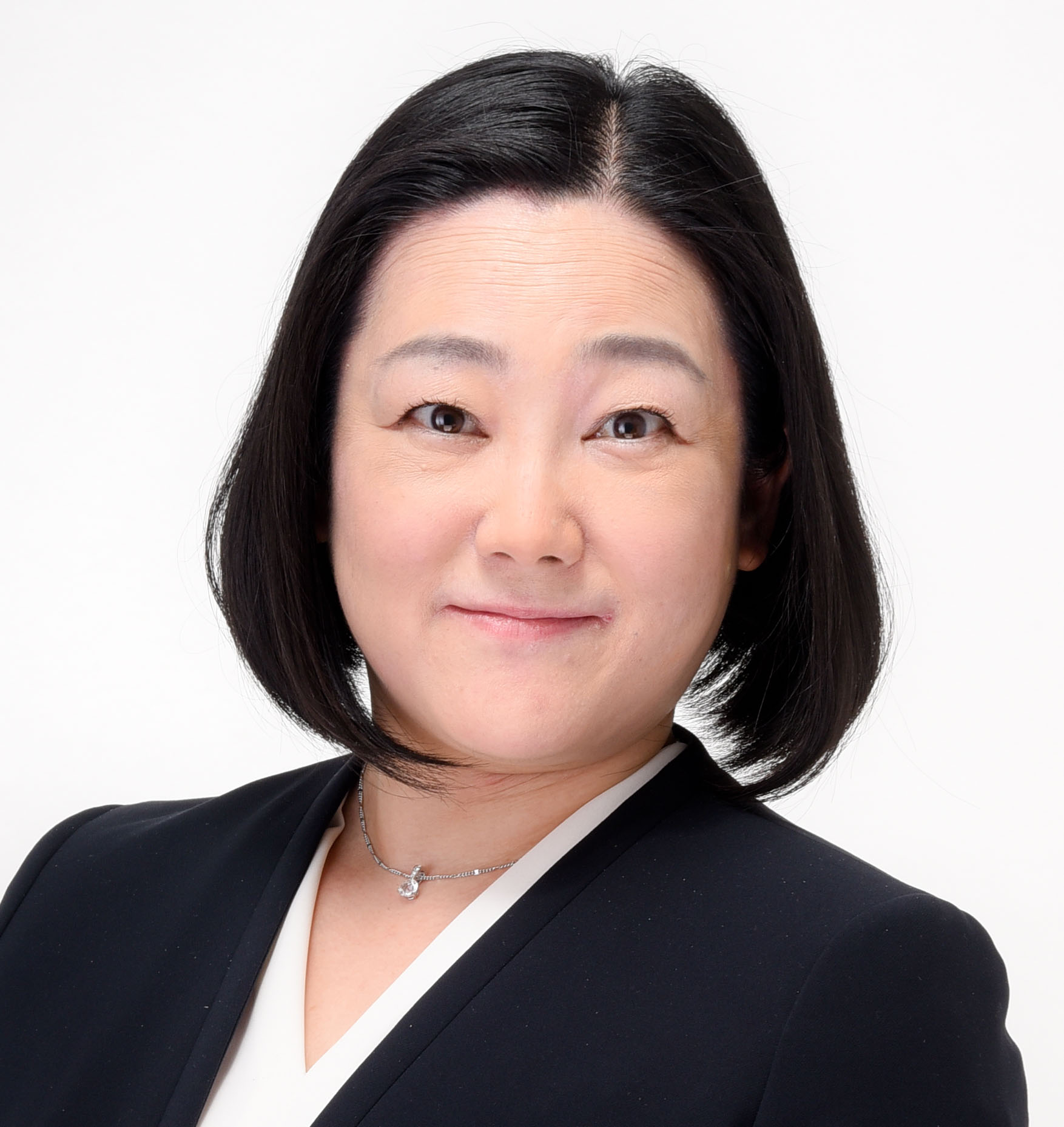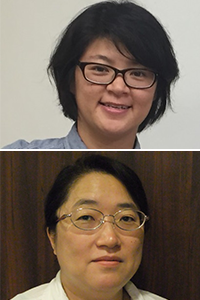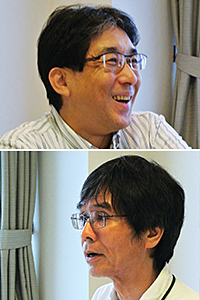The Topic of Japan Viewed from Oxford
How do people at universities overseas view Japan? What do those universities teach students about Japan? I would like to answer these questions in this special feature of Chuokoron based on my own experiences over the last nine years I spent as a professor at the University of Oxford, one of the oldest and top-ranked universities in the UK.
In addition to answering these questions, I would like to examine the problems involved in the topic (that is, what is taught about Japan overseas), which interests people in Japan to the point of urging Discuss Japan editors to come up with a special feature like this. I would like to do so because this second theme brings problems in Japanese society and Japanese education to the forefront.
Report on the State of Japanese Studies Overseas

Kariya Takehiko, Professor, University of Oxford
Before touching on interest in Japan and research and teaching in Japanese Studies at the University of Oxford, I would like to point out several facts that became evident at an international conference organized by Nissan Institute of Japanese Studies at the University of Oxford, to which I belong, in March 2013. Researchers in Japanese studies invited from not only Britain and Japan but also from North America and Australia (including Japanese language instructors) discussed trends in Japanese studies overseas (opportunities to study and learn ways of understanding Japan) at this conference, which was held to address the question of why Japan matters (what matters about Japan and how those things about Japan matter).
One of the sub themes at the conference was whether interest in Japanese studies was weakening. A possible shift from Japan bashing to Japan passing was a public topic. Furthermore, interest in Chinese studies has strengthened among East Asian studies as a result of China’s economic and political rise. The possibility that interest in Japan was weakening under the effect of this trend was pointed out at the conference.
Professor Patricia Steinhoff, who teaches Japanese studies courses at the University of Hawaii, answered this question directly. Professor Steinhoff examined empirically whether or not the suspected decline in interest was true, comparing data from 2005 with those from 2012 based on surveys of Japanese studies institutions and programs in the United States and Canada. According to the findings of these surveys, the number of Japanese studies programs did increase, from 184 in 2005 to 196 in 2012. The number of Japanese studies specialists grew from 1,284 in 2005 to 1,435 in 2012 as well. In addition, the number of Japanese studies majors in doctoral courses rose from 585 in 2005 to 634 in 2012. Their number has a bearing on the number of researchers in the future. The number of Japanese language courses outside fields of Japanese studies also rose from 1,757 in 2005 to 2,380 in 2012. They grew more in terms of ratio. Based on these findings, Professor Steinhoff concluded that the suspected decline in Japanese studies was a myth that was not grounded in fact.
Certainly, we cannot deny that the major progress being achieved by China in politics and the economy is causing Chinese studies to attract rapidly increasing attention. The impression that interest in Japanese studies is declining by comparison is correct among East Asian studies in relative terms. However, a decline in interest in Japanese studies was not found to be factual as far as North America was concerned. That was the real situation.
Interest in Pop Cultures
Professor Steinhoff raised other important points in her report as well. She pointed out that interest in Japanese studies had shifted among students, and that their interest had a different focus from that of students interested in Chinese studies.
According to her, more students took an interest in the Japanese economy and businesses in the 1980s, when interest in Japan rose and acted as a tailwind for Japanese studies and Japanese language studies. Professor Steinhoff believes that the current interest in Chinese studies resembles the way things were for Japanese studies back then.
In contrast, interest in Japanese studies has departed from the stage of being a temporary fad. It is now growing steadily. Unlike in the past, the interest is now based on interest in Japanese cultures, particularly subcultures and pop cultures. Professor Thomson stressed a similar point in her report, which examined changes in the numbers of students in Japanese studies and Japanese language courses in Australia.
This point coincides with a point raised by Professor Murphy, a Chinese studies specialist at the University of Oxford, when the author interviewed her a while ago. According to her, the number of applicants to undergraduate-level Chinese studies courses is decreasing at the University of Sheffield, one of the leading universities in East Asian studies in the UK. In the meantime, the number of applicants to Japanese studies courses is said to be increasing. According to Professor Murphy’s interpretation, pop cultures and subcultures are stronger motives for young people aged 19 to 20 years old than interest in future businesses. She also believes that such motives are supporting the increase in the number of students choosing Japanese studies over Chinese studies, or their strong interest in Japanese studies.
In this way, interest in cultures is connected to the strong interest in Japanese studies found at universities in English-speaking countries such as the United States, Canada, Britain and Australia. There is no doubt that the global popularity of Japanese pop cultures and subcultures, such as manga, animations and video games, is supporting this strong interest. I think that is a point that anyone could come up with.
The view that interest in cultures is supporting Japanese studies may seem to be a matter of course on the face of it. However, this view requires caution. I think that it will be better for me to examine this issue after introducing Japanese studies at the University of Oxford.
Japanese Studies at the University of Oxford
Two organizations are taking charge of Japanese studies (including Japanese language education) at the University of Oxford. The Japanology program in the Faculty of Oriental Studies that belongs to the Oriental Institute is mainly taking charge of undergraduate-level education. There are two associate professors of Japanese literature (in charge of modern literature and medieval literature, respectively), a professor of linguistics and faculty members in charge of Japanese language education in this program. As their fields of expertise suggest, humanities subjects, such as literature, linguistics and the Japanese language, form the center of undergraduate-level education. (Professors in the program teach students in master’s and doctoral courses as well.) In the meantime, the subjects studied by students in the program include those that come under social sciences as well. Instructors who belong to the other of the two organizations, the Nissan Institute of Japanese Studies, teach those subjects.
There is one professor each in charge of political science, economics and businesses, anthropology, history and sociology (the author) in this latter organization, which offers a master’s program in Japanese studies based mainly on social sciences and modern history. This master’s course differs from the Faculty of Oriental Studies program mentioned above in that the course bears the title Modern Japanese Studies (instead of titles like Japanology that retain the flavors of Orientalism). Moreover, the professors of the course are also members of the departments of their disciplines (such as the Department of Sociology, the Department of Politics and International Relations, the Faculty of History and so on). They teach students in master’s and doctoral programs in the departments of their disciplines as well. (The research topics chosen by these students are not limited to matters related to Japan, particularly in the Department of Sociology to which I belong.)
Students in the Modern Japanese Studies master’s program are required to take two subjects from their respective fields of expertise, in addition to a course on social sciences methodology and intensive Japanese language classes. These requirements are aimed at deepening their understanding of Japan through social sciences and modern history while equipping them with a high command of Japanese language skills. Starting from the new academic year in October 2017, professors affiliated with the Faculty of Oriental Studies and the Nissan Institute of Japanese Studies have offered one integrated master’s program titled Japanese Studies (with the word “modern” removed from the previous title) as the only postgraduate master’s program related to Japan at the University of Oxford (http://www.nissan.ox.ac.uk/prospective-students).
Presence or Absence of a Viewpoint for Relativizing Japan
What is being taught in these programs? In this article, I would like to focus my answer on the Modern Japanese Studies master’s program.
The questions asked in the final examinations that are requisite for graduation enable us to estimate nearly all the contents of the course. As I pointed out in Okkusufoodo-karano Keisho (An Alarm Bell from Oxford), my recent work published as part of Chuokoron-Shinsha, Inc.’s La Clef paperback series, these examinations are given entirely in essay style in the final term after the end of classwork for all subjects (in which students are required to read a massive amount of literature). The final examination for each subject is three hours long. Normally, nine questions are asked in each subject, and students choose three of them to answer. They handwrite their answers on four to five A4-sized sheets per question. The questions asked in the final examinations reflect the study results expected in the respective subjects.
To cite examples (translated once in Japanese then translated back into English, and slightly modified by the author), the following questions were asked in a past final examination for a course on Japanese politics taught by Professor Neary.
- What contributions have opposition parties in Japan made to Japanese politics in the period since 2005?
- Discuss the statement “Japan cannot become a normal country unless it revises its Constitution.”
- Discuss the following opinion. “Japan appears to be a follower, rather than a leader that produces norms, in fields such as the environment, human rights and the promotion of democracy (Riesman, 2006).”
- Have Japan’s diplomatic policies in the period since the 1990s contained anything beyond attempts to mobilize soft power?
All of these questions are very hard to deal with. They require knowledge learned from literature with a prerequisite understanding of the concepts associated with Japanese politics. Professor Neary asked these questions to make the students think, rather than simply asking them to present detailed knowledge.
Let me now share the questions in Japanese history taught by Professor Konishi.
- Compare the idea of “Nature” (Shizen) in Ando Shoeki’s social thought and in that of Dutch Medical Studies. What does the comparison tell us about late Tokugawa intellectual life?
- Was Meiji Ishin a revolution or a restoration?
- Was Japanese culture in the 1930s fascist?
- How closed was Tokugawa Japan?
These questions examine students’ understanding of the modern history of Japan (particularly changes from the Edo period to the Meiji period). They are impossible to answer unless students theoretically and conceptually grasp the historical experiences of Japan. They demand a knowledge of historical facts learned from literature and lectures and the ability to understand such knowledge conceptually and theoretically, and ponder and express it.
As these questions suggest, what is expected to be discussed in final examinations is more than knowledge based on facts, regardless of the subject, including politics, history, economy, society or cultures. These questions reflect a strong awareness of a connection between facts and concepts and theories that give meanings to the facts. Answers are not good unless they can express this connection logically and articulately. Furthermore, these questions demand the ability to understand and think in original ways. We can say that teaching and learning in the program are undertaken for these purposes.
The program offer concepts and theories that are indispensable in each subject to such thinking in English, the de-facto lingua franca in today’s academic community. That is another important point. Each course provides theoretical foundations built on concepts and theories elaborated across different disciplines including Japanese studies, and are all expressed in English, one of the most easily accessible languages globally. Therefore, we cannot use them in an isolated way, as is often the case among Japanese scholars in Japan who teach and write only in Japanese. The theoretical foundations and their modifications should be contiguous to those developed in the global context, not limited only within Japan in Japanese. In other words, Japanese studies outside Japan must stand on such a global context which enforces any academic products of Japanese studies to be located in this global academic context contiguous to academic works in other disciplines as well as in other geographical regions.
On the other hand, there are apparent cases in which theories built overseas are applied to research on Japan undertaken by Japanese researchers at universities in Japan, and concepts borrowed from overseas are translated and used for analyses, explanations and teaching in Japanese. The fruits of the studies of Western knowledge have, despite ridicule in the name of imported studies, long characterized social sciences scholarship and education in Japan. However, the types of reactions and interactions that the application of borrowed foreign theories and concepts may cause to these original theories and concepts are sought in very limited cases. Theorization does not incorporate such intended reactions and interactions easily as long as the theories and concepts are expressed only in Japanese and Japanese people are assumed to be their main readership. If I might venture to simplify, theories and concepts are in just one-way borrowing and applications without any productive returns contributed to the global academic communities. Differences from overseas Japanese studies in which the application of any theories and concepts inevitably goes back to the elaboration process for original theories and concepts arise as a result of the language (often in English) selected for expressing them.
To rephrase further, a comparative viewpoint must lay at the base of Japanese studies overseas in understanding Japan from the beginning. The subject called “Japan” cannot be viewed as self-evident in Japanese studies overseas. As the international conference mentioned above inquired, Japanese studies overseas must ask why Japan matters (what matters about Japan and how those things about Japan matter). Differences from studies produced by Japanese researchers in Japan in the Japanese language for Japanese readers result from this point. This aspect is also related to overseas interest in Japanese cultures that I put on hold earlier in this article.
A Transnational Viewpoint
At this point, I would like to go back to Professor Steinhoff’s report cited above. Professor Steinhoff pointed out that interest in Japanese cultures, including subcultures and pop cultures, has acted as a strong motive for students who have chosen Japanese studies in recent years. What Kitagawa Toshihiko, a Japanese language instructor at Reagent’s University in London, told me in connection with this point was instructive.
According to Kitagawa, interest in Japanese manga, animations and the like is definitely a reason for students to consider studying the Japanese language. They have been in touch with these cultures through television and the Internet since early childhood. They belong to a generation of people who grew up that way. As a supplementary explanation for this view, Kitagawa pointed out the possibility that many of those young people grew up without being aware that these cultures came from Japan.
The same thing is happening in the field of food culture. Japanese sushi has now gone completely global. We can buy sushi at ordinary supermarkets in major cities in Britain, and there are conveyor belt sushi bars at airports and big railway stations. However, according to Kitagawa, young people today have virtually no perception that sushi is Japanese food. Cultures cross national borders easily. They mix with other cultures. They spread and are consumed independently from their places of origin. They also produce new cultures. These movements tear down frameworks such as nation-states and national cultures.
Political attempts to link subcultures and pop cultures born in Japan with industrial and trade policies under the slogan of “Cool Japan” were repeatedly reported once. In these attempts, Japan was considered to be a uniform entity with a nation-state, a national culture and a national economy. Efforts were made to link cultures born in Japan with businesses without asking any questions about this view. In that sense, they were an internationalization strategy for crossing borders with their national status as an unchangeable assumption.
This strategy and viewpoint result in contributions to the substantialization of the uniformity of entities called “national.” They represent a viewpoint that contrasts with the interest shown by young people in contents that are Japanese cultures with no obsession with their roots. To borrow an expression from Sakai Naoki, a professor of Japanese culture at Cornell University, young people’s interest is “an approach to cultures that is made in a way that cuts across a community of people” (Sakai, N. et al., eds., 1996, Nashonaritii-no Datsukochiku (Deconstructing Nationalities) Kashiwashobo Publishing Co., Ltd., p.18). The spread and consumption of cultures via YouTube and other web media has admittedly accelerated this approach.
As Sakai points out, opinions called Nihonjin-ron (theories on Japanese people) once produced blind spots that caused people to lose sight of the diversity and multiplicity of cultures and societies by attributing cultures to a specific national culture and a nation-state and viewing the presence of cultures peculiar to Japan (that differ mainly from Western cultures) as self-evident. As a result, those opinions provided a cognitive framework that admits the superiority of things national in a way they did not intend. They were nationalism of a kind that demanded the endorsement of the presence called Japan as a uniform entity. The same thing is happening today, even though advocates do not call their opinions Nihonjin-ron anymore.
I would like to quote Sakai’s statement further in connection with this point: “Accidental origins in the Japanese Archipelago or Western Europe and the sameness of ethnic groups and people are entirely different matters. Many of the computer games sold by Nintendo are made in Japan, but many children around the world enjoy them without taking any notice of things like their Japanese origin [sentences are omitted here]. On the contrary [phrase added by the quoter], the types of opinions that adhere to national cultures and national characteristics force cultures to symbolize ethnic groups and nation [kokumin]. The signs of ethnic groups and nation are not inherently engraved in cultures themselves” (op. cit. p. 22).
We should not mistake greater overseas interest in Japanese culture for the greater presence of a national community of people called Japan. Professor Whittaker, another colleague of mine at the Nissan Institute of Japanese Studies, pointed out the same thing in his conversation with the author.
This very special feature on how people view Japan at universities overseas and how Japan is taught there can end up building a view on Japan that strengthens the substantiality and uniformity of a nation-state and a national culture and becomes trapped in such frameworks, unless we watch out for the danger.
The affirmative re-endorsement of the images and understanding of Japan is sought today because of a growing sense of threat that China and other emerging nations may catch up with or overtake Japan. A viewpoint for relativizing the very desire for endorsement is essential for staying away from such simplistic nationalistic moves and sentiments. A transnational viewpoint (a viewpoint beyond nation-states) offers an effective approach to that end.
Moreover, a viewpoint for accepting diversity and multiplicity in Japan, instead of grasping Japan (Japanese people and cultures) as a monolith or a homogeneous entity, is essential. The latter viewpoint once led Nihonjin-ron to the myth of ethnic homogeneity. All the viewpoints mentioned above share a stance against viewing the phenomenon called Japan as self-evident.
Moving beyond Nationalism
All modern nation-states have an awareness called nationalism. We cannot deny the fact that advancing globalization is strengthening nationalism as well. However, with endorsed academic freedom and freedom of expression as education institutions, how can universities teach the next generation to become “educated citizens” who are able to relativize such trends prudently?
The contents of subjects taught are not the only things that universities in Japan can learn from research and teaching in Japanese studies at overseas counterparts. They can also learn the viewpoints and approaches undertaken there by learning how they teach.
A shift toward classwork in English is being encouraged these days under a globalization policy aiming at Japanese universities. However, teaching subjects in English is not sufficient for globalization. The advantage of lessons in a language other than Japanese lies in the establishment of a distance from Japan without viewing any phenomena known as Japan as self-evident, together with the birth of awareness that any research on Japan should stand on the same intellectual ground of transnational academic communities. We can achieve such results in the Japanese language, too, if we take this into account seriously.
The question of why Japan matters (what matters about Japan and how those things about Japan matter), which keeps a distance from the view that the phenomena and experiences called Japan are self-evident, has currency in university education in Japan as well. This question helps universities in Japan establish a foothold that is not buffeted about by intensifying waves of globalization and nationalism, which often urge us to simplify world views.
Translated from “Tokushu ‘Habado no Nihon sai-hakken’: Okkusufoodo kara mita ‘Nihon’ toiu mondai (Feature Article ‘Rediscovering Japan at Harvard’: The Topic of Japan Viewed from Oxford),” Chuokoron, September 2017, pp. 80-88. (Courtesy of Chuo Koron Shinsha) [September 2017]




